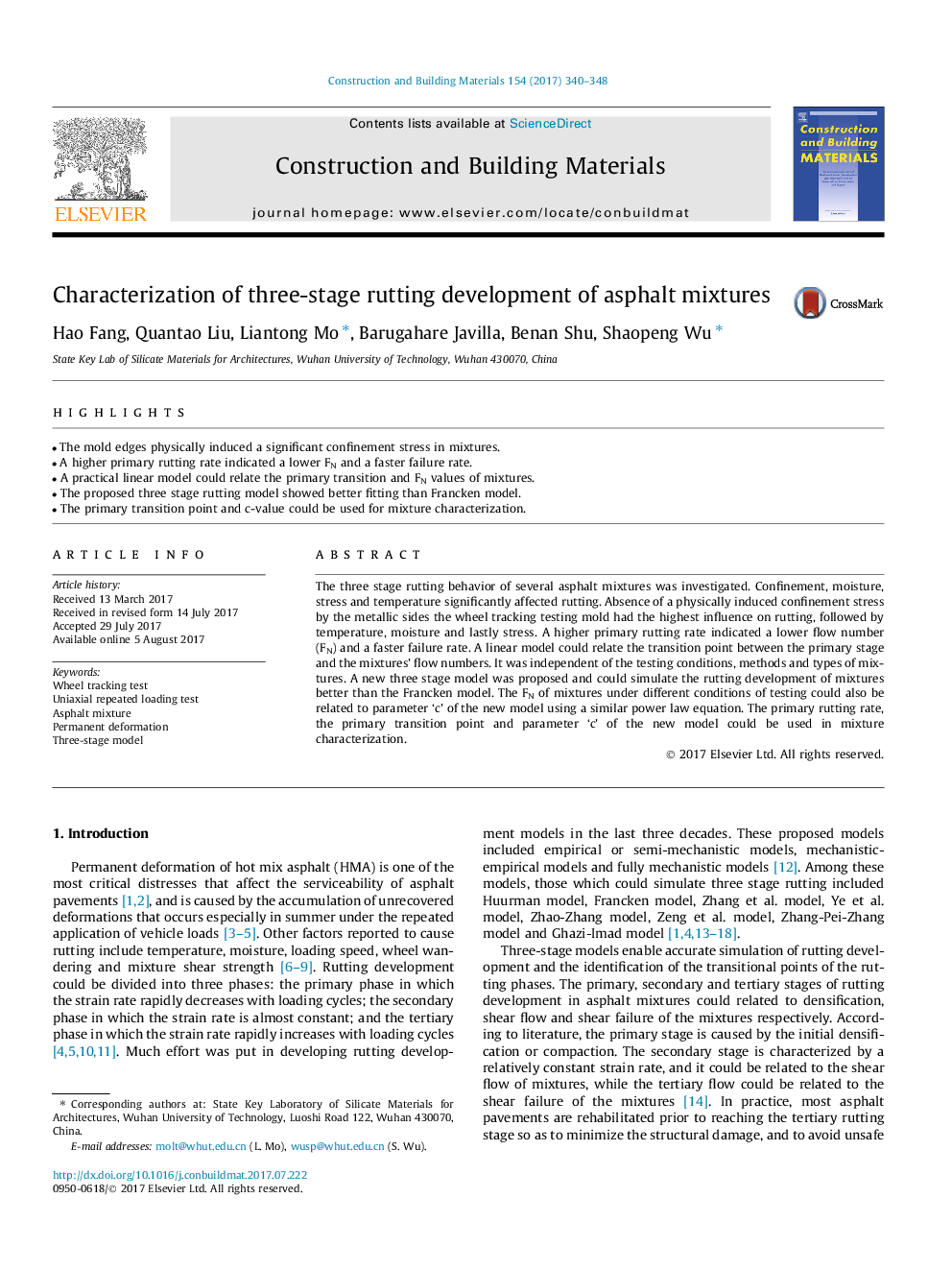| کد مقاله | کد نشریه | سال انتشار | مقاله انگلیسی | نسخه تمام متن |
|---|---|---|---|---|
| 6480119 | 1428752 | 2017 | 9 صفحه PDF | دانلود رایگان |
- The mold edges physically induced a significant confinement stress in mixtures.
- A higher primary rutting rate indicated a lower FN and a faster failure rate.
- A practical linear model could relate the primary transition and FN values of mixtures.
- The proposed three stage rutting model showed better fitting than Francken model.
- The primary transition point and c-value could be used for mixture characterization.
The three stage rutting behavior of several asphalt mixtures was investigated. Confinement, moisture, stress and temperature significantly affected rutting. Absence of a physically induced confinement stress by the metallic sides the wheel tracking testing mold had the highest influence on rutting, followed by temperature, moisture and lastly stress. A higher primary rutting rate indicated a lower flow number (FN) and a faster failure rate. A linear model could relate the transition point between the primary stage and the mixtures' flow numbers. It was independent of the testing conditions, methods and types of mixtures. A new three stage model was proposed and could simulate the rutting development of mixtures better than the Francken model. The FN of mixtures under different conditions of testing could also be related to parameter 'c' of the new model using a similar power law equation. The primary rutting rate, the primary transition point and parameter 'c' of the new model could be used in mixture characterization.
Journal: Construction and Building Materials - Volume 154, 15 November 2017, Pages 340-348
